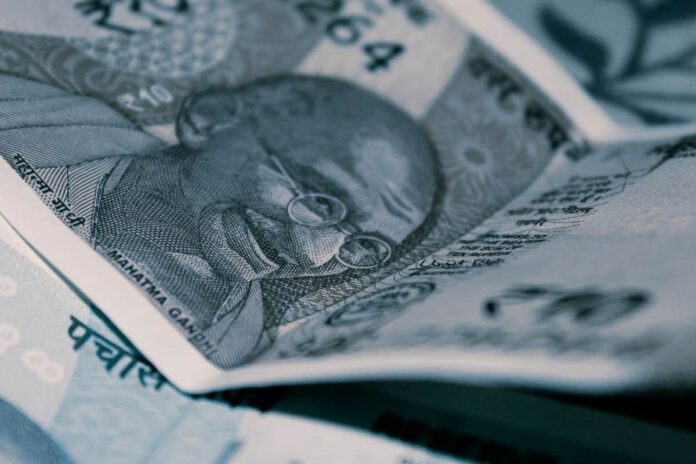Vijay Valecha, Chief Investment Officer at Century Financial, sheds light on the trend of falling rupee and its potential implications
As the Indian rupee (INR) experiences a decline, reaching a five-month low against the dollar, there is an interesting phenomenon at play that could potentially provide some support during these challenging times. The upcoming festival season is anticipated to drive up remittances from Gulf-based expat Indians, which could help counterbalance the rupee’s current downward trajectory.
The Indian rupee (INR) has depreciated over 1.2% from its late-July high to a five-month low against the dollar. In doing so, it declined past 83 per dollar for the first time in nearly ten months! A stronger greenback, rising US treasury yields, and a weaker Chinese yuan contributed to the rupee’s descent. Historically, a slump in the rupee relative to the USD and AED is inadvertently followed by a surge in remittances to India by the NRI community. This is because a weaker rupee allows NRIs to send more money to India while spending the same amount in their host nations.
The Indian rupee is likely to remain under pressure in the near-term due to several reasons. For starters, even though market participants are broadly expecting interest rates to have nearly peaked in the US, the “sell-the-dollar” theme will not automatically lend support to the Indian rupee. Since last autumn, the currency appears to have found equilibrium around 82 per dollar – a level that is consistent with real-effective exchange rate.
This was likely driven by the uptick in RBI reserves from approximately $525 billion in October 2022 to $601.5 billion as on 4 August 2023, surpassing the $600 billion-mark for the first time in 16 months. By bidding for the greenback, the RBI has somewhat offset the impact of increased foreign flows into India as well as the broader weakness in the US Dollar Index. This has ensured the rupee remains in a tight trading range since its record low in October 2022. As a result, the rupee has underperformed any rally in Asian currency peers while still losing less ground during times of dollar outperformance.
-
The confluence of a weaker rupee, the festival season, and the potential for increased remittances underscores a unique dynamic that could partially counteract the challenges posed by the falling rupee
-
As we move into the festive months, it will be interesting to observe how these trends play out and their impact on the overall economic landscape of India
Meanwhile, headline inflation in India surged to 7.44% in July to a 15-month peak, substantially higher than the RBI’s upper tolerance limit of 6%. Nonetheless, Core CPI decelerated slightly to 4.9% in July from 5.1% in June – the lowest reading in nearly three years. Nevertheless, despite the uptick in inflationary pressures, the RBI is not expected to tighten financial conditions with another rate hike after it took a pause on 10 August 2023.
By virtue of these factors, the INR is likely to remain subdued. This presents an opportune moment for the NRI community to remit money to India, especially with the imminent arrival of prominent festivals like Onam and Raksha Bandhan in August; Ganesh Chaturthi, Durga Puja, and Dussehra in October; and Dhanteras and Diwali in November.
Interestingly, remittances account for around 3% of Indian GDP and are the second largest source of external financing following service exports. They also serve as a financial cushion in the event India’s trade deficit widens. According to a World Bank report, India received a substantial $89.4 billion in remittances in 2021, elevating its position as a top recipient globally. This figure rose to $100 billion in 2022, marking a YoY growth of 12%. Recently, the U.S. overtook the UAE as the top destination for remittances.
In conclusion, the confluence of a weaker rupee, the festival season, and the potential for increased remittances underscores a unique dynamic that could partially counteract the challenges posed by the falling rupee. As we move into the festive months, it will be interesting to observe how these trends play out and their impact on the overall economic landscape of India.
*****************************************************
Readers
These are extraordinary times. All of us have to rely on high-impact, trustworthy journalism. And this is especially true of the Indian Diaspora. Members of the Indian community overseas cannot be fed with inaccurate news.
Pravasi Samwad is a venture that has no shareholders. It is the result of an impassioned initiative of a handful of Indian journalists spread around the world. We have taken the small step forward with the pledge to provide news with accuracy, free from political and commercial influence. Our aim is to keep you, our readers, informed about developments at ‘home’ and across the world that affect you.
Please help us to keep our journalism independent and free.
In these difficult times, to run a news website requires finances. While every contribution, big or small, will makes a difference, we request our readers to put us in touch with advertisers worldwide. It will be a great help.
For more information: pravasisamwad00@gmail.com



